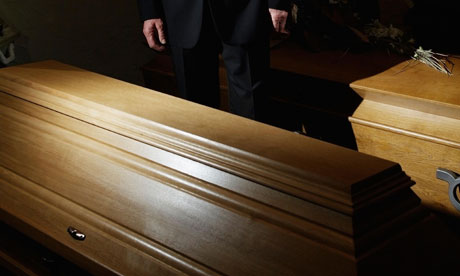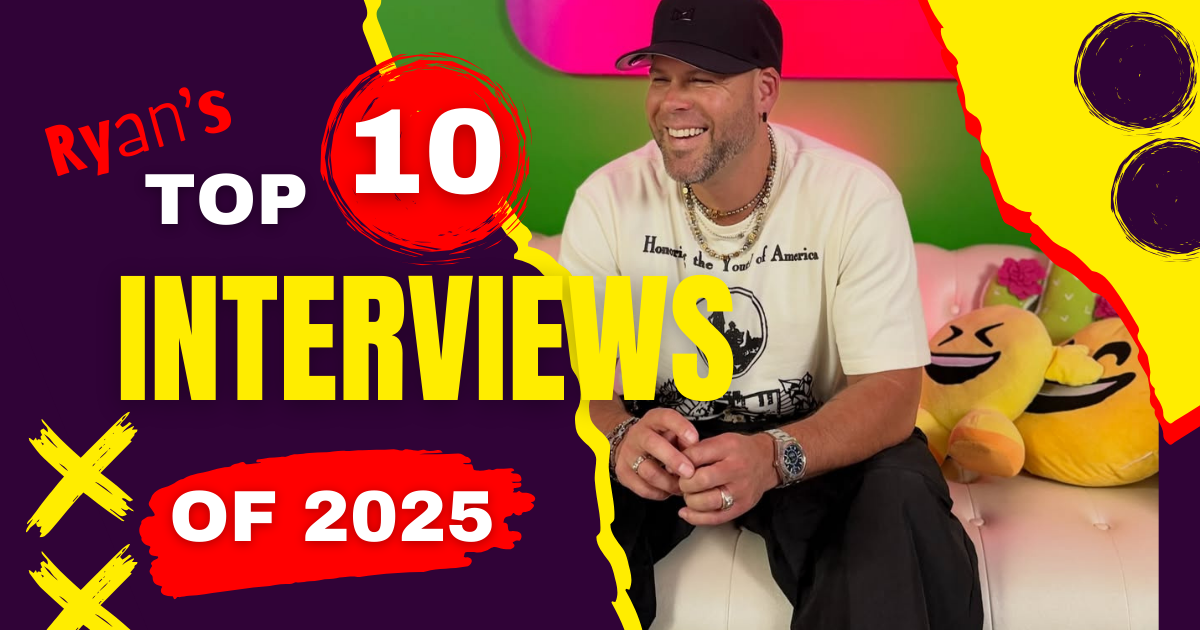I’ve Been an Embalmer for 14 Years and See My Share of Bodies. Any Questions?
I spend my time with dead bodies, cleaning them and preparing them for funerals. It’s delicate work. Go ahead, ask me anything.
Jenn Park-Mustacchio is a licensed funeral director and embalmer who works in New Jersey, USA. She studied anthropology and human biology at the University of Pennsylvania, and has been in the funeral industry for 14 years. She answered reader submitted questions on theguardian.com.
Read full release from theguardian.com
Take us through a regular day at work:
Typically, my day begins when someone dies. Since I’m a trade embalmer, I don’t handle the first call or transport of a deceased person (although I’ve previously done both). My boss calls me, and I arrive at the funeral home shortly after the deceased has been taken into our care to begin the embalming process. I suit up in personal protective equipment (a gown, apron, shoe covers, gloves etc) and evaluate the person to decide how I will proceed. Every case is different and requires a special combination of fluids (which are mixed according to the height, weight and physical conditions of the deceased). I mix the fluids accordingly and begin to set the features.
Setting the features involves closing the eyes and mouth and placing cotton in the mouth to give the person a more natural expression. Next, I gently flex the arms, legs and fingers to relieve the muscle tension or stiffness of rigor mortis. I position the hands one over the other, wash the body, cover the genitals (to preserve modesty) and prepare the tools I will need to embalm.
Typically, we use a scalpel to make a small incision near the right collarbone. From there, we search for the common carotid artery and internal jugular vein. A small incision is made in each. Arterial tubes are placed in the artery (one is directed towards the heart, while the other is directed towards the head). A drain tube, or angled forceps, is also placed in the vein to facilitate drainage of blood. The hose, connected to the embalming machine, is then connected to the arterial tube directed towards the heart. The embalming machine is then adjusted to regulate pressure (the force of the fluid) and rate of flow (speed of the fluid). These knobs are adjusted differently during embalming for each case to create the optimum rate of injection for the body. The machine is switched on and the fluid begins to move through the hose, through the arterial tube and into the body. As the embalming fluid is pushed through the arterial system, the blood is forced out through the jugular vein.
The body is vigorously massaged with a soapy sponge to help facilitate drainage and distribution of embalming fluid. The tissue will begin to firm and take on a rosy appearance, which is an excellent indication of adequate distribution and a successful embalming. The tubes are then removed, the vein and artery tied off and the incision is sutured. Next, the cavity is treated. Fluid is suctioned from the hollow organs with an instrument called a trocar, then a high-index (very strong) fluid is placed into the cavity and the incision is closed with a small circular plastic button like device referred to as a trocar button. The deceased is again washed. Their hair is combed and cream is placed on their face to prevent skin dehydration. The deceased is then covered and will remain in the preparation room until they are dressed, cosmetized and ready to be placed into a casket for viewing.
Typically the viewing takes place a few days after death. So I will clean up the prep room and leave until it’s time for the next embalming or until its time to dress and casket someone who’s been previously embalmed.
*The above is a description of a “typical” embalming. If a person dies tragically (murder, suicide, automobile accident) the embalming process is drastically different.
Tell us about something surprising, or unexpected, that happened to you while working:
I’ve had several interesting things happen on the job, but one particular moment comes to mind. I went in for a 3am embalming and heard a strange whisper. I quickly fumbled for the lights and, upon turning them on, figured out that the noise was coming from the occupied stretcher. I approached with caution expecting the person inside could be alive. However, upon unzipping the cover, I found a tape recorder (that I later found out was playing a Buddhist chant). The next day the family explained that, ideally, a monk would be at the place of death to chant when the soul exits the body. Chanting calms the soul, which the buddhists believe, is in a state of confusion and fright after exiting the body. The soul of the deceased must be put at ease with food and chant throughout the difficult time of transition. This particular experience was both enlightening and frightening!
What makes for a really good day at work?
My job is fulfilling when a particularly difficult case comes out better than expected. If a family decides to keep a casket open, when they previously thought they wouldn’t be able to, or when someone compliments my work. The best compliment I got was from a woman whose daughter died of bone cancer. She took my hand and said, “Thank you, she’s so beautiful, she looks like she could get up and dance.”
What is your salary? Do you get benefits?
The median annual income for funeral directors in the US is over $52,000 (with the annual salary in New Jersey averaging above $79,000). Regulations vary state by state, but here in New Jersey we are embalmers/funeral directors and are licensed to handle all aspects of the funeral (from first call to final disposition). In other states they have separate licenses for funeral directors and embalmers.
Even though I am licensed to perform all aspects of the business, I work as an embalmer because I enjoy that particular aspect of the business and found that it allows me to spend a significant amount of time with my family. Trade embalmers, like myself, are paid by the job. Usually we work for more than one location and will embalm, dress, casket, cosmetize and do restorative work. Trade embalmers have the potential to make significantly more than the average funeral director depending on how many locations they work for and how busy those locations are. However, we do not receive health benefits because we are not full-time employees.
Have you ever made a mistake at work?
I’m fortunate enough to say that I have not made any major mistakes. When I was an intern, I was super careful and very aware that any mistake I made could potentially affect the grieving process of the deceased friends and loved ones, so I always consulted with senior funeral directors if I was unsure of what to do or how to proceed with difficult cases.
Highlights (so far) from the Q&A
Q:
Have you ever worked on a friend or relative, or would you ask a colleague to do that?
A:
I helped prepare my grandmother and embalmed my cousin and one of my high school teachers. I would draw the line at mom or dad. Although I do know of a few embalmers who have embalmed their parents. Those of us who choose to handle the preparation of our friends and loved ones usually do so because we feel as though we can do the best job restoring their natural appearance because we knew them so well in life. It is difficult, but it’s a labor of love.
Q:
Is it true that they have to ‘wire’ people’s jaws shut, and put ‘velcro’ contact lenses in people’s eyes, and stuff their cheeks with cotton wool? And is it true that the last thing that everybody ever does is evacuate their bowels?
A:
The mouth can be closed by suture or by using a device that involves placing two small tacks (one anchored in the mandible and the other in the maxilla) in the jaw. The tacks have wires that are then twisted together to hold the mouth closed. This is almost always done because, when relaxed, the mouth stays open. We also use cotton to fill out hollow cheeks or give the appearance of teeth to those who have none, or are missing a few. The device under the eye is actually a serrated plastic eye cap that helps keep the eye closed. I do not enjoy the look of them, so I don’t use them. Cotton is usually sufficient to use under an eyelid if the eye has deflated. However, we usually don’t need to use anything under the eyelid at all. As for your last question, if someone hasn’t recently evacuated their bowels they may defecate upon death (but not always.
Q:
I grew up living in a cemetery and used to help dig / re-open the graves (my dad was the gravedigger). It has left me with absolutely zero belief in ghosts,and a quiet and calm acceptance of death as a natural process.
Just wondered how you view the subject of ghosts and all the other cliches connected with graveyards?
A:
I feel much the same as you. I have yet to see anything that convinced me of the presence of ghosts. If they do exist, I’m sure they could think of better places to be than haunting me at the funeral home 😉
Q:
Thank you for the details of embalming. Respectful and professional.
I’m having second thoughts about being cremated now.
1. Is the body still a person or just a human body?
2. Does the dead person’s religion change the embalming routine?
Many thanks.
A:
Thank you so much.
In my humble opinion, the deceased is a vessel where life once existed. I still treat that person with respect, but the spark that made them who they are is no longer there.
Certain religions do not embalm (Jewish and Muslim are the two that come to mind immediately). They believe the body should be buried with all it’s components. So removing the blood would be a violation of their beliefs. They adhere to a more “natural” idea of burial that involves shrouding the deceased and/or placing them in a natural pine box.
Q:
Bloody hell, they are giving the guardian picks out like it was Xmas, quick think of a question!
My actual questions (coughs, prepares..)
1- How do you keep up to date with current techniques? Are there conferences, trade magazines and an active collaborative community of..embalmers?
2- Can you elaborate on the techniques involved in more violent deaths? What is the most drastic repair work you have had to do and have you ever found this distressing to do or can you just zone out and focus on the task at hand regardless?
3- Related to the above, have you ever been really moved by something you’ve seen? After all these are real people and you must get a fascinating insight into their lives, maybe some of them haven’t been seen naked for years.
Thanks
A:
You sure seem to have a lot of questions for this lowly mortician. Anyway, despite the minor insult, I’ll answer your questions…
We must take continuing education classes in order to keep current with our licenses (which must be renewed every 2 years). There are also trade magazines and private funeral forums where we discuss issues.
The more violent deaths involve autopsies and require all the limbs and head be embalmed separately. The organs are also treated separately and placed back into the cavity post embalming. There is a great deal of suturing (the y incision on the body and the cranial incision of the head)
There have been many instances that have had great impact on my life. I’m extremely outspoken about the issue of domestic violence after handling the funeral of a 20 year old young lady who was shot by her boyfriend (who then turned the gun on himself). Children are always difficult as well.
As for the most difficult restoration. That would have to be making a nose for a lady that had craniofacial cancer.
Q:
I am in the UK and was always under the impression that at least partial embalming was done for viewing purposes. Is it necessary to allow viewing without extreme distress? Or can folk choose no embalming whether they are buried or cremated?
A:
Embalming is not required by law (except in certain instances, and only in certain states). Here in NJ you are only required to be embalmed if you’re being transported across state lines. Some people choose to embalm before viewing because they prefer the life like appearance that embalming imparts. Some are embalmed, have a viewing and are cremated. It’s strictly the choice of the family. From what I understand, embalming is not common in the UK, but that doesn’t mean that the morticians don’t set the features. I’m assuming this may be what you’re referring to. It is possible to set the features (close the eyes and mouth) and cosmetize the deceased for viewing without embalming.
Q:
Do you believe in any kind of conscious existence after physical death? (needn’t neccesarily be limited to religious/spiritual concepts of ‘afterlife.)
Great article/interview, very interesting.
A:
Thank you. I guess if call myself agnostic. So of hope something wonderful exists after death.
Q:
I was a funerals manager for ten years and it was the first page a Stephen Kings Pet Cemetery that made me want to join that profession. What spiked your curiosity?
(for those who haven’t read it, the first page gives a list of people who wrote about the things they saw and the things they did…famous people throughout history. Underneath is another list of people who never wrote about the things they saw and did. They were the undertakers who buried and embalmed the first lot. The page ends with “Death is a mystery but burial a secret.” )
A:
Dom, very interesting! My dad tried to buy a funeral home when I was 12 and they wouldn’t sell it to him because he wasn’t licensed. I told him not to worry, because I’d be a mortician when I grew up and we could buy a funeral home together. My father has always had an interest in the death care industry and the afterlife and I guess it rubbed off on me as a small child.
Thank you for your contribution!
Q:
Have you ever considered surreptitiously stealing body parts, moving to a gothic German castle, then sewing them together and animating your creation by pulling a huge switch during a lightning storm while laughing maniacally?
A:
My son’s name is Victor (after Mary Shelley’s Victor Frankenstein). So the answer is, of course 😉
Q:
A:
I definitely have not, but my dad requested he be displayed face down in his casket so all the people he didn’t like could kiss his behind!
Q:
A:
It was one of my favorite shows! The prep room and embalming equipment were accurate depictions. Some of the restorative methods they used were very imaginative, but not at all accurate. It’s been quite some time since I’ve seen it, so if have to give it a review to point out specifics.
Q:
Is embalming just for the pre-burial (or -cremation) viewing? Is that commonplace in the US? (I’ve been to a few funerals here in England and I’ve never seen it or heard of it being done.)
What do you think of the environmental impact of embalming chemicals? Is embalming fluid still formaldehyde based?
How much reconstructive surgery do you do in a case where someone is seriously injured, and when do you just look at someone and say ‘no’?
Park-Mustacchio? Brilliant.
A:
Excellent questions! Thank you.
Embalming is usually selected when there’s a public viewing followed by a burial (or cremation). Last I checked the cremation rate in the US was around 40% (and many of the people choosing this option are not embalmed). So, my educated guess is that around 60% of people in the US are still embalmed.
The funeral industry is moving away from formaldehyde based fluids and opting to use glutaraldehyde based fluids (which is considered to be the “greener” embalming option). Glutaraldehyde is also used to sterilize medical equipment in certain corcumstances and is far less toxic than formaldehyde.
I will always attempt reconstruction if the family requests it, but I would advise against viewing if I didn’t feel like my attempt was presentable. Sometimes anything is better than the last memory a person was left with. If someone who died tragically was found by their loved one, it is my job to try my best to restore the appearance and give that loved one a more pleasant memory than the one they were left with.
Q:
If a man dies and he didn’t shave that day, do you shave him?
A:
















